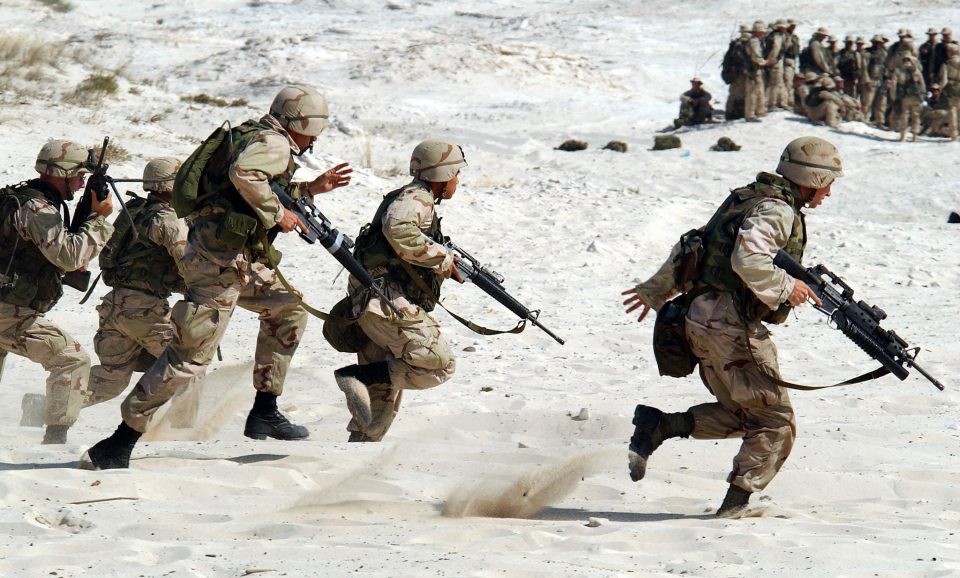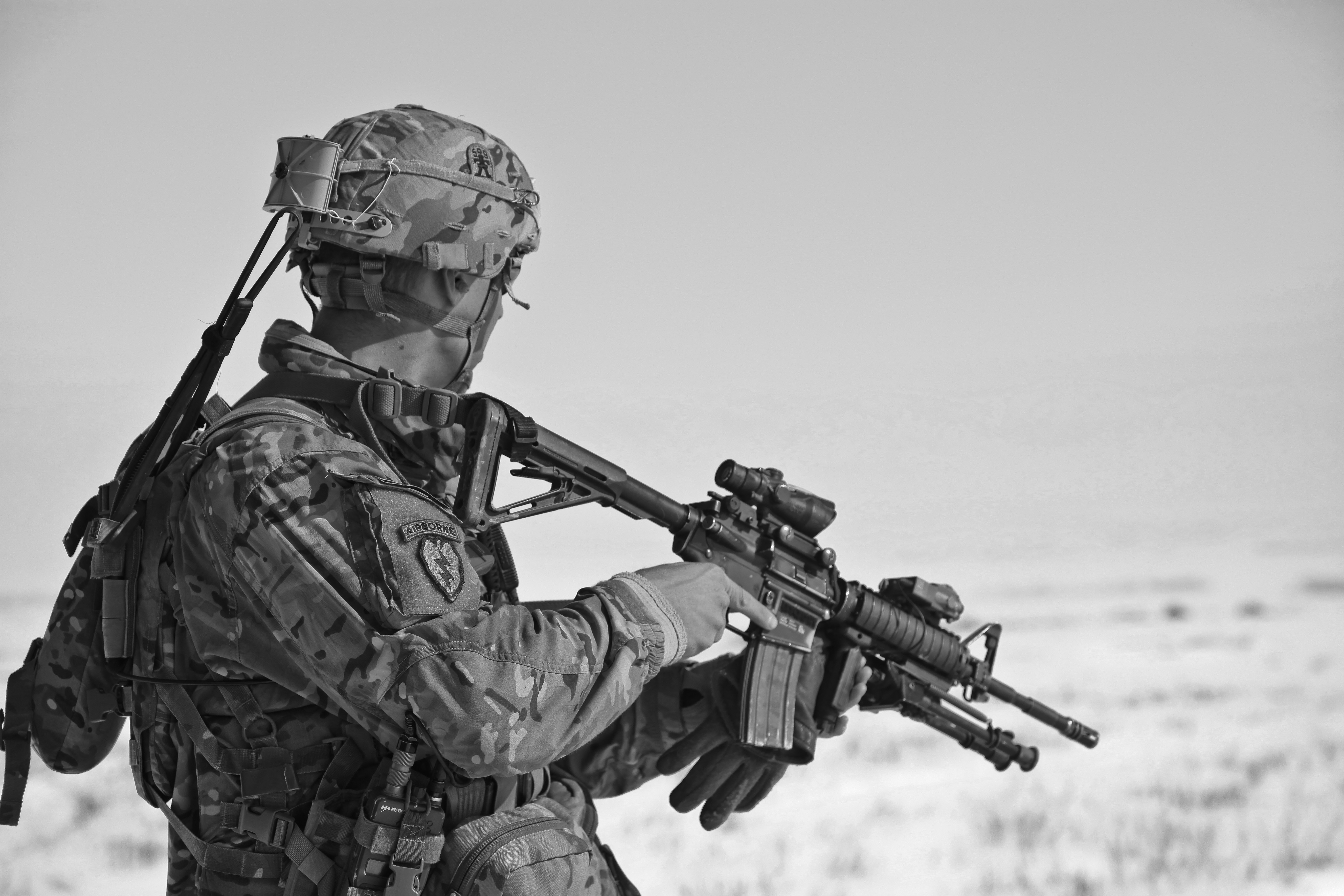The Tactical Combat Casualty Care (TCCC) Guidelines are the standard of care for the modern battlefield. TCCC offers operational guidelines for a range of combat personnel – from recommendations for all combatants to combat paramedics and SOF medics. Though these guidelines represent years of cumulative civilian and battlefield experience and literature, the Committee on Tactical Combat Casualty Care (CoTCCC) still maintains that these recommendations are intended to be guidelines only and are not a substitute for sound tactical and/or clinical judgment.
Medical care is provided during three phases: Care Under Fire (CUF), Tactical Field Care (TFC), and Tactical Evacuation Care (TACEVAC). For an overview of TCCC, please see our previous introductory post.
For other topics related to Military Medicine, please see our posts on Damage Control Resuscitation, Prolonged Field Care, Blast Injuries, Inhalation Injuries, Abdominal Stab Wounds, and Emergency Resuscitative Thoracotomy.
This post will summarize recent updates to the TCCC guidelines; the impetus for these changes being feedback and experience from current or recent military conflicts as well as emerging civilian and operational literature. For full documents and rationale, please refer to the references below.
Addition of a Preferred Extraglottic Airway (EGA) Device – August 2017
Past Recommendations
- Original TCCC Guidelines (1996) included a recommendation to use the LMA as an option to secure the airway during the TACEVAC phase
- Over the past 20 years since this recommendation, a variety of EGAs have been successfully used in civilian and combat airway management applications
- In 2012, the CoTCCC and Defense Health Board (DHB) reaffirmed support for the use of these devices but did not recommend a specific device based on available evidence at the time
Current Recommendation
- Current evidence suggests that the i-gel EGA performs as well or better than the other EGAs available
- Other advantages: ease of training, size and weight, cost, safety, and simplicity of use
- Gel-filled cuff:
- Eliminates the need for cuff pressure monitoring (e.g. high altitudes)
- Reduces risk of pressure-induced neuropraxia to cranial nerves in the oropharynx
- No requirement to carry extra syringes for inflation or a manometer to monitor pressure
- No risk of cuff failure or leakage due to tearing or direct trauma to the balloon mechanism
- Includes:
- Supplementary oxygen port
- Gastric port for suction or NG tube insertion
- Integral bite block
- Gel-filled cuff:
- Other advantages: ease of training, size and weight, cost, safety, and simplicity of use
Summary of Changes to the Guidelines
- Additions:
- EGAs as an option for airway management in Tactical Field Care
- Use of suction as an adjunct to airway management when available and appropriate
- Recommends the i-gel as the preferred EGA in TCCC
- Pulse oximetry monitoring is a useful adjunct to determine airway patency
- Capnography should also be used in during the TACEVAC phase
- Clarifications:
- Clarifies wording regarding cervical spine stabilization to emphasize that it is not needed for casualties who have sustained only penetrating trauma (without blunt force trauma)
- Reinforces that surgical cricothyroidotomies should not be performed simply because a casualty is unconscious
- Reinforces that airway status is dynamic and may quickly change; this requires frequent re-assessments
- Notes:
- Should an EGA with an air-filled cuff be used, cuff pressure must be monitored, especially with changes in altitude
- EGAs will not be tolerated unless the casualty is deeply unconscious, therefore attempt a nasopharyngeal airway (NPA) if doubt exists about whether the casualty will tolerate an EGA
- For casualties with facial trauma/burns with suspected inhalation injury, NPAs and EGAs may be inadequate; surgical cricothyroidotomy may be required

Management of Suspected Tension Pneumothorax (TPTX) – Aug 2018
Identification:
- Clarifies wording to maintain an aggressive approach to suspecting and treating TPTX based on the mechanism of injury and respiratory distress as opposed to waiting until shock develops before treating
- New wording emphasizes that shock and cardiac arrest will likely result if TPTX is not quickly alleviated
- Suspect TPTX and treat if significant torso trauma or primary blast injury AND any of the following:
- Severe/progressive respiratory distress
- Severe/progressive tachypnea
- Absent or markedly decreased breath sounds on one side of the chest
- Oxygen saturation < 90%
- Shock
- Traumatic cardiac arrest without obviously fatal wounds
Initial Management:
- Chest seal in place, burp or remove the chest seal
- Establish pulse oximetry monitoring
- Place casualty in supine or recovery position unless conscious and needs to sit up to maintain airway (e.g. maxillofacial trauma)
Needle/Catheter Unit:
- 10 gauge, 3.25 inch needle/catheter unit is now an alternative (previously recommended 14 gauge unit)
Location: Both potential sites for needle decompression (NDC) included without specifying a preferred site
- Lateral site: 5th ICS, anterior axillary line
- Anterior site: 2nd ICS, midclavicular line
Insertion of Needle/Catheter Unit:
- Insert the needle/catheter unit perpendicular to the chest wall all the way to the hub
- Then hold the needle/catheter unit in place for 5-10 seconds before removing the needle (allow full decompression)
Confirmation of Success:
- Observed hiss of air (difficult to appreciate in the combat setting),
- Decreased respiratory distress,
- Increased hemoglobin oxygen saturation, or
- Improvement in signs of shock
- Casualty with no vital signs has return of consciousness and/or radial pulse
If no Confirmation of Success:
- If initial NDC fails:
- Perform second NDC (with new needle/catheter unit) on ipsilateral chest at the recommended site that was not previously used
- Consider, based on mechanism of injury and physical, whether decompression of the contralateral chest may be needed
- If second NDC unsuccessful: Only two NDCs should be attempted before continuing on to “Circulation” to evaluate/treat for other causes of shock
- Eastridge’s landmark 2012 paper documented that non-compressible hemorrhage caused many more combat fatalities than TPTX; since manifestations of hemorrhagic shock and obstructive shock from TPTX can appear similar in the combat setting, the Guidelines now recommend proceeding to treatment for hemorrhagic shock (when present) after two NDCs
- If initial NDC was successful, but symptoms recur:
- Perform another NDC at the same site using a new needle/catheter unit
For Refractory Fluid Non-Responsive Shock:
- Consider untreated TPTX; this was not previously addressed in the TCCC Guidelines
- Finger and tube thoracostomy are identified as additional treatment options to treat suspected TPTX after two unsuccessful NDC attempts
- With the caveat that the combat medical provider has the skills, experience, and authorizations to perform these advanced interventions and the casualty is in shock
Traumatic Cardiac Arrest:
- Additional emphasis to perform bilateral NDCs on a torso trauma casualty with traumatic cardiac arrest before discontinuing treatment or reaching a medical treatment facility

Conclusions
- The TCCC Guidelines represent an evolving standard of care with ongoing input from civilian and operational theatres
- TCCC now recommends the i-gel EGA as an adjunct in airway management
- Current guidelines clarify the identification/indications, treatment specifics, and alternative treatments in the management of traumatic tension pneumothorax
References
- Extraglottic Airways in Tactical Combat Casualty Care: TCCC Guidelines Change 17-01. Edward J. Otten, MD, Harold R. Montgomery, ATP, Frank K. Butler, MD. Journal of Special Operations Medicine. J Spec Oper Med. Summer 2017, Volume 17, Edition 4
- Management of Suspected Tension Pneumothorax in Tactical Combat Casualty Care: TCCC Guidelines Change 17-02. Frank K. Butler, MD, John Holcomb, MD, Stacy Shackelford, MD, Harold R. Montgomery, ATP, Shawn Anderson, NREMT-P, Jeff Cain, MD, Howard Champion, MD, Cord Cunningham, MD, Warren Dorlac, Brendon Drew, MD, Kurt Edwards, MD, John Gandy, MD, Elon Glassberg, MD, Jennifer Gurney, MD, Theodore Harcke, MD, Don Jenkins, MD, Jay Johannigman, MD, Bijan Kheirabadi, MD, Russ Kotwal, MD, Lanny Littlejohn, MD, Matthew Martin, MD, Edward Mazuchowski, MD, Edward Otten, MD, Travis Polk, MD, Kyle Remick, MD, Peter Rhee, MD, Jason Seery, MD, Zsolt Stockinger, MD, Jeremy Torrisi, ATP, Avi Yitzak, MD, Ken Zafren, MD, Scott Zietlow, MD. Journal of Special Operations Medicine. J Spec Oper Med. Summer 2018, Volume 18, Edition 2.
- Joint Trauma System and Committee on Tactical Combat Casualty Care. Edward Otten, MD. TCCC Podcasts. Extraglottic Airways in TCCC. 19/01/2018. https://deployedmedicine.com/market/11/content/132
- Tactical Combat Casualty Care (TCCC) Guidelines Aug 1 2018. Joint Trauma System (JTS) and Committee on Tactical Combat Casualty Care (CoTCCC). https://deployedmedicine.com/



Hi Richard,
Thank you for your excellent blog full of highly relevant teachings and up to date information.
I am a Canadian citizen, currently working as an EM physician in Europe since I graduated from there.
I am also a medic reserve officer in Europe.
I was wondering whether TCCC training could be done in Canada, are you aware of any place that offers that training?
Best regards
Youcef M.D